On painting a still life > Katharine Krieg explains why your job is to make a structurally sound painting with the basic building blocks of art.
Bringing a Deeper Meaning to Still Life Art
BY KATHARINE KRIEG
Most still life painters I know are collectors – borderline hoarders in many cases. They know all the places to get the best stuff for their setups. Antique shops, thrift stores, barn sales, friends’ attics are all gleefully rummaged through by still life artists. Subject matter is chosen very carefully. Objects and settings can be arranged to hold larger statements than just themselves when put together. A still life arrangement becomes an invitation to the viewer to move in for a closer look. A visit to an art museum’s collection of vanitas painters shows that this is not a new concept. I love a good puzzle and there is a delight in weaving objects and stories together.
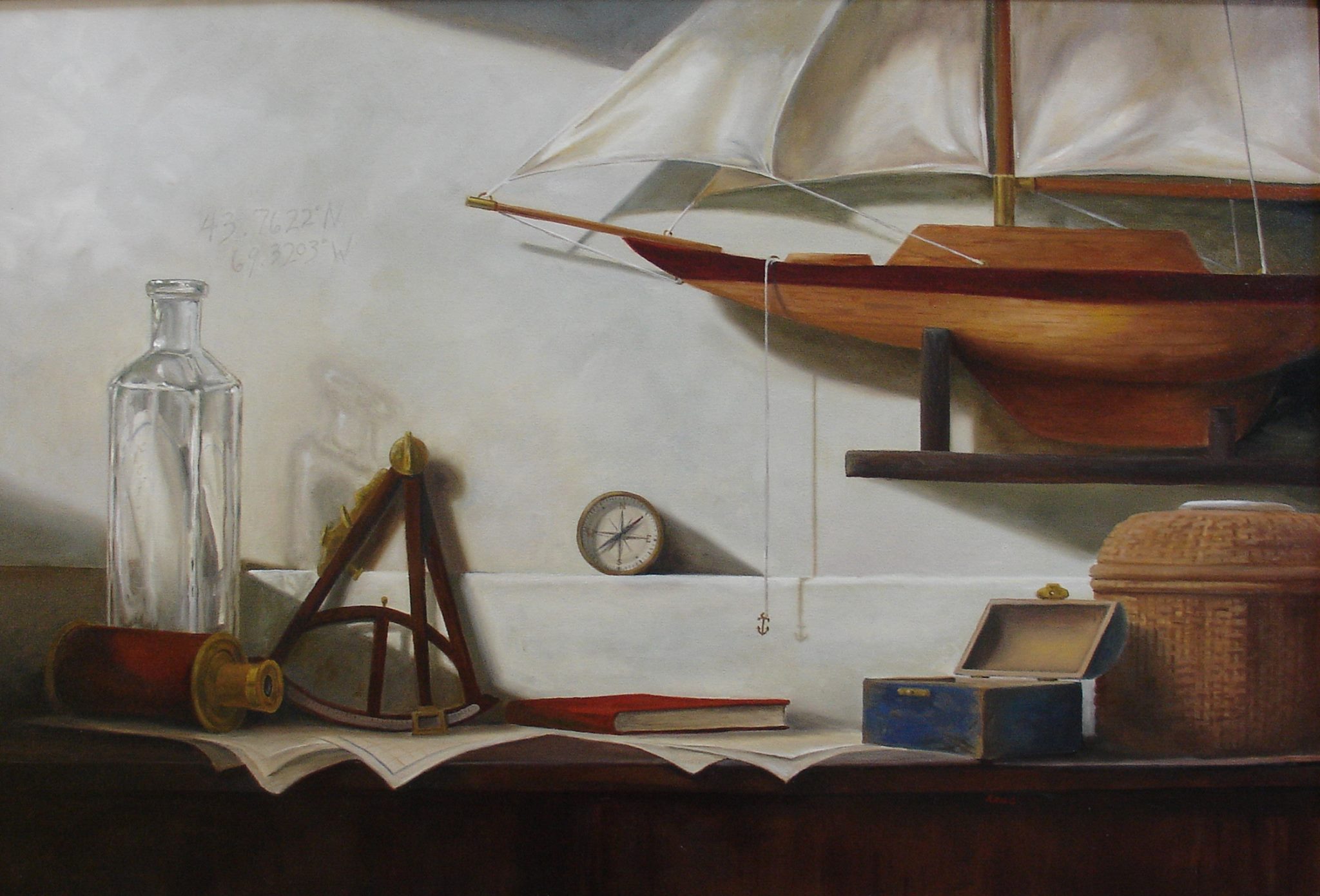
IDEA VS COMPOSITION
Bringing a narrative to the image being built, like with any painting, starts with an idea. One of the most important tasks of an artist is to look. Without that intake of information there is no response. Looking can mean observing sunlight passing along a kitchen counter or the elegant lines within a vintage desk fan. It can take the form of news headlines, personal life events, or a brief conversation overheard in a diner. Telling these experiences in paint brings another layer to the image that can result in a visual pun or story.
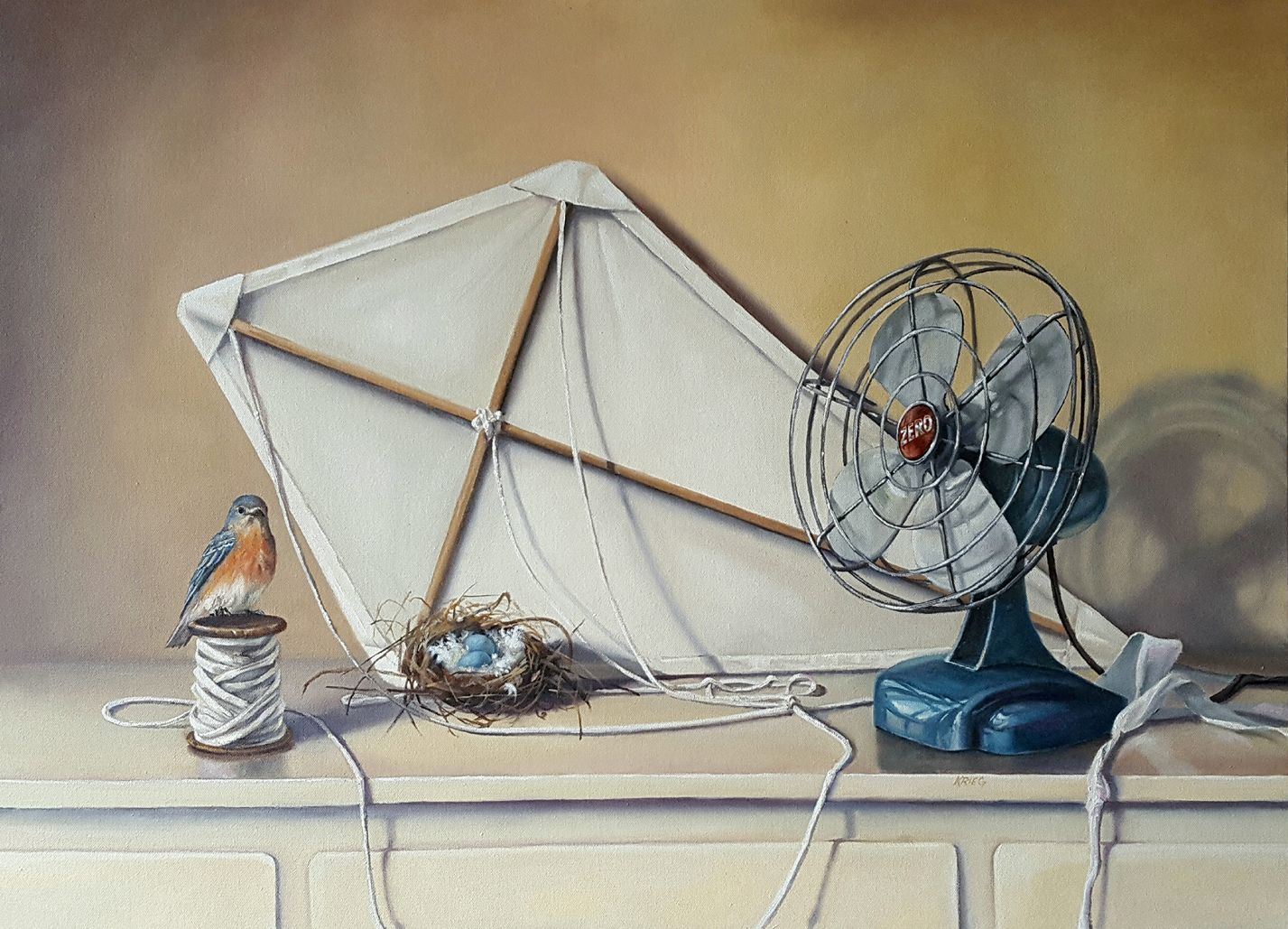
Striking a balance between the composition and idea is both tricky and irresistible. Finding a clever connection between objects and observations can be exciting but it’s important to avoid the pitfall of letting the message overwhelm the mechanics. The constant underlying job of any painter is to make a structurally sound painting with building blocks like balance, value, and good drawing. The best idea in the world will fall apart if the armature holding it up lacks solid design.
COMMON LANGUAGE
By combining objects and environments a hint is given to the viewer that there is more to this image than meets the eye and the game is on. With troubling events filling so much of our news feeds and creating a sometimes relentless message of ugliness, I prefer to focus my still life on the more subtle and contemplative side of the narrative spectrum. I feel there is value in a positive message in a painting and offering the opportunity to question and spend time with a painting can be a respite from a lot of negativity.
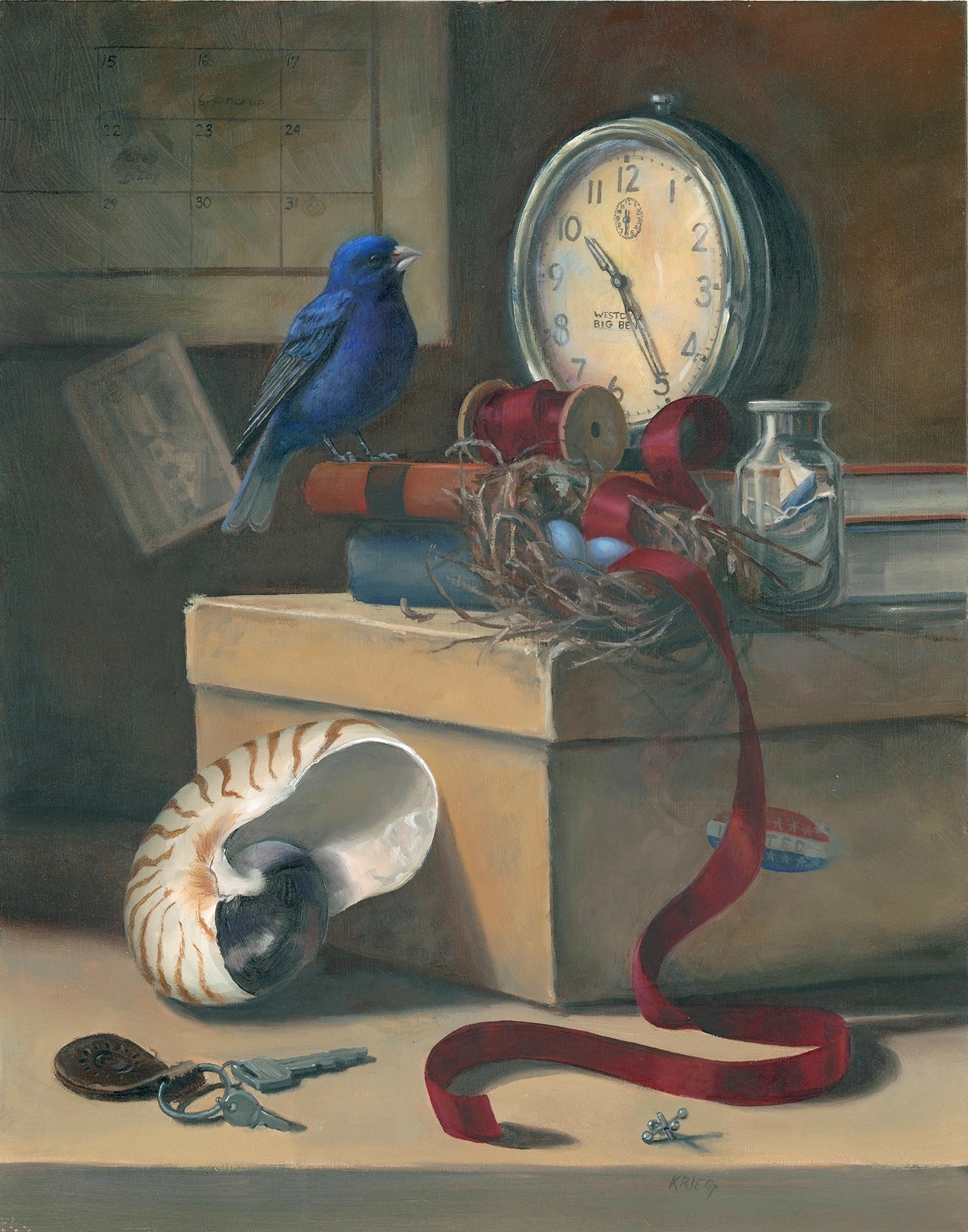
Our common visual language changes not only in the actual meaning associated with an image but also with the speed in which these interpretations change with each new trend that pops up on the Internet. The Oxford dictionary constantly drops and adds new words and definitions to our language. Being aware of how an image could be interpreted impacts how it is put together, however, that doesn’t guarantee your message coming across every time to every viewer.
My “Bellwether” is not necessarily the same for the next person nor should it be. An owl nowadays is more likely to be “cool” instead of symbolic. And that is valid because, frankly, owls are cool. If the door is left open to allow for alternative interpretations and connections that come from the audience then a painting can still be a success.
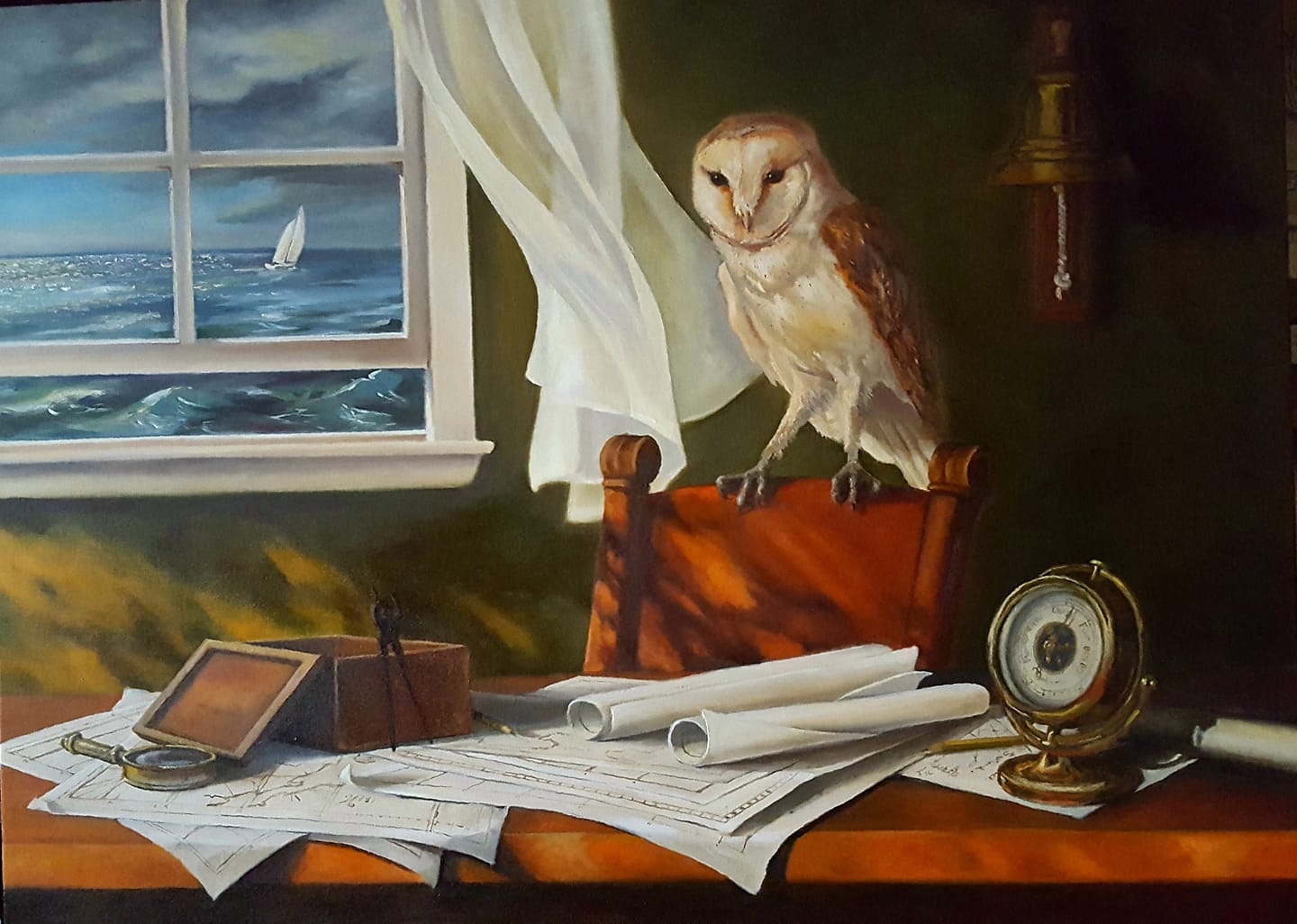
Connect with Katharine Krieg at katharinekrieg.com.
Related > Browse a variety of art video workshops on how to paint a still life here.
Related > Browse more articles on painting still life art here.
Visit EricRhoads.com (Publisher of Realism Today) to learn about opportunities for artists and art collectors, including Art Retreats – International Art Trips – Art Conventions – Art Workshops (in person and online, including Realism Live) – And More!


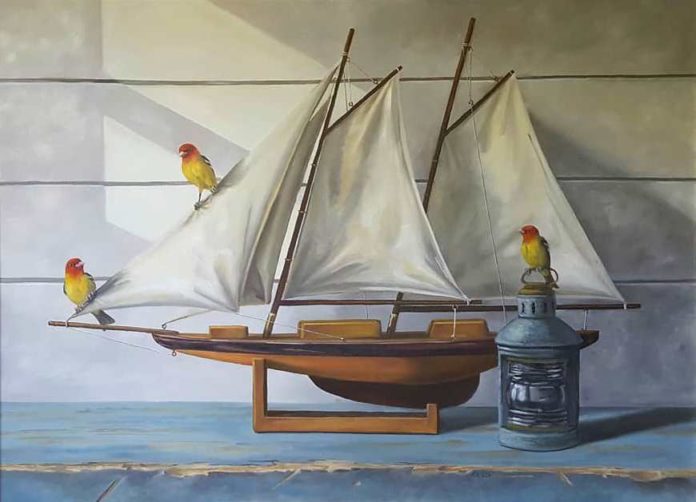


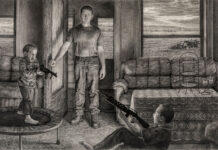
Nice Article
Comments are closed.